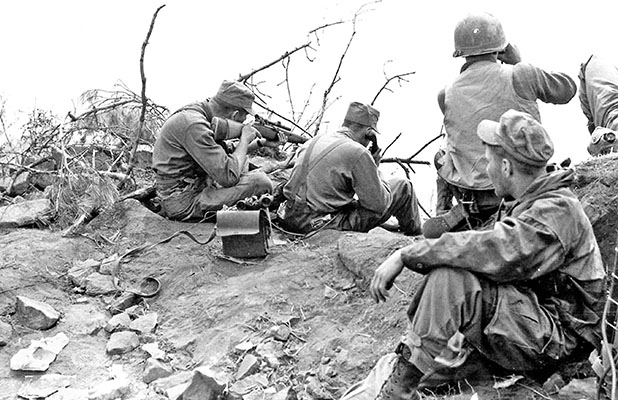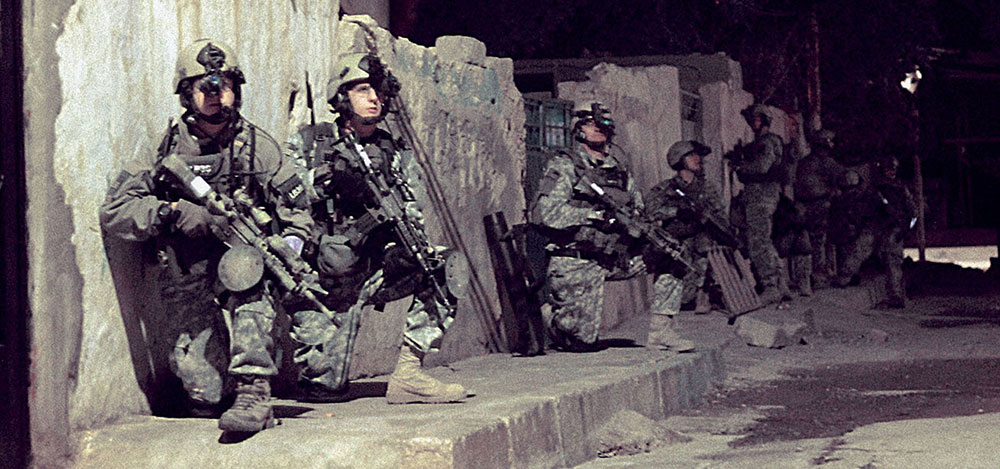DOWNLOAD
The history of the U.S. Army Ranger Infantry (Airborne) companies was brief, lasting only from August 1950 to October 1951. A total of fourteen companies were activated at Fort Benning, Georgia, with six seeing combat in Korea. Intended to attack targets deep behind enemy lines in the way the North Korean Army employed guerrilla units in the early days of the war, the Ranger companies did not have the impact intended by Army Chief of Staff General (GEN) J. Lawton Collins, when he directed their formation in August 1950.1 A variety of factors; the changing battlefield environment, the mis-employment of the companies, and resistance in the Army to the Ranger concept, mitigated against their success. Despite being a short-lived experiment, the legacy of the Airborne Ranger companies is today’s U.S. Army Ranger School, whose Program of Instruction (POI) evolved from the original six-week Ranger company collective training. The Ranger companies are also an integral part of the lineage of today’s 75th Ranger Regiment.

When the first three Ranger companies arrived in Korea in December 1950, the battlefield was fluid, featuring considerable movement by both sides. Three months before, the Allies broke out of the Pusan Perimeter after GEN Douglas A. MacArthur’s successful surprise landing behind North Korean lines at Inch’on. The North Korean People’s Army (NKPA) retreated north, pushed by the U.S. and Republic of Korea Army (ROK) forces. The situation was ideal for behind-the-lines raids, the Rangers’ specialty. The classic examples are the airborne insertion of the 2nd and 4th Ranger Companies with the 187th Airborne Regimental Combat Team (ARCT) at Munsan-ni in March 1951, and the 4th Company’s small boat assault on the Hwachon Dam the next month. However, before the Ranger Companies reached Korea, the opportunities to conduct these types of missions were fading. When Communist Chinese Forces (CCF) entered the war in strength in November 1950, the prospects for the Rangers diminished as the battle lines gradually hardened along the 38th Parallel. By June 1951, GEN Matthew B. Ridgway, the Commander-in-Chief of UN forces in Korea, realized that the period of effectively employing Ranger companies had passed.2 To gauge the Ranger’s utility across the command, Ridgway queried his subordinate commanders in the spring of 1951 on their effectiveness. The responses were mixed. While the Rangers were generally held in high regard by the units to which they were attached, the concept did not get strong support.
Major General (MG) Clark L. Ruffner, 2nd Infantry Division, commended the 1st Ranger Company: “The unit’s performance has been outstanding.”3 MG Claude B. Ferenbaugh, his fellow 7th Infantry Division Commander, was equally impressed with the 2nd Ranger Company. “On every occasion, they were highly praised.”4 Ferenbaugh recommended that Ranger battalions be formed and attached to each division.5 These two infantry divisions had the longest association with Ranger companies. The 25th Infantry Division Commander, MG William B. Kean, believed the 5th Rangers “have proven their value to this division.”6 Overall, however, these positive comments did not outweigh the negative reports from the majority of Corps and Division commanders.

Lieutenant General (LTG) Frank W. Milburn, I Corps, led the opposition to the concept. He recommended: “American Ranger Companies not be employed in Korea,” based on inadequate intelligence and the lack of suitable targets for Ranger missions. Milburn cited difficulty in planning airborne insertions by his divisions. Furthermore, obvious racial differences with Orientals made Rangers easy to detect when operating in rear areas.7 MG William M. Hoge, IX Corps, cited Ranger limitations in their inability to operate independently without support for sustained periods. He noted unit strength reduced their use in special operations missions. Hoge decried the “creaming” of the infantry divisions of select non-commissioned officer volunteers which deprived units of high quality corporals and sergeants.8 This was a common complaint as was the inability by infantry divisions to insert the Rangers deep enough behind enemy lines to be effective.9
The new 25th ID commander, Brigadier General (BG) J. Sladen Bradley, did not share MG Kean’s high opinion of the Rangers: “This company has been employed on what was considered to be proper Ranger missions [by the Division staff] without profitable results and has been a luxury rather than a useful unit. Ranger Company missions do not normally present themselves in the immediate front of the division. Profitable Ranger targets which develop at a greater depth in front of a division are too deep in this mountainous terrain to allow for the commitment of a company size Ranger organization.”10 GEN Ridgway blocked the use of the Rangers against deep battle targets based on the inhumane treatment of prisoners by the NKPA.11
The general consensus was that sending and supporting the Ranger companies deep inside enemy territory was beyond the capability of the divisions. The Ranger units were too small for sustained operations. To avoid being totally negative about the Army Chief of Staff’s “pet project,” most commanders did a quick sidestep and advocated Ranger battalions attached at Corps or Army level as they were in World War II.12 Based on his findings being reinforced by the field commanders, Ridgway requested permission from GEN Collins to inactivate the Ranger companies in-theater. It was approved by the Army on 2 June 1951.13 The majority of the Rangers in Korea were reassigned to the 187th ARCT. The remainder were dispersed among the U.S. divisions in theater based on their accumulated combat points.14 Ranger deactivations in Korea led to the elimination of the Army’s eight remaining Ranger companies on 11 October 1951.15

With an armistice pending in Korea, the recommendation to form Ranger battalions got little interest in Washington. However, the Army Staff recognized the value of the Ranger training program. LTG Edward H. Brooks, Second U.S. Army spoke up: “We’d have a better combat Army if all the men were graduates of the [Ranger] course.”16 This led GEN J. Lawton Collins to direct that: “Ranger Training be extended to all combat units of the Army in order to develop the capability of carrying out Ranger-type missions in all Infantry units in the Army.”17 The Ranger Training Center at the U.S. Army Infantry School was converted into the Ranger Department in 1952.18
Twenty years later, GEN Creighton W. Abrams Jr. resurrected Ranger battalions in the Army. In July 1974, the 1st Battalion, (Ranger) 75th Infantry was activated, followed shortly by the 2nd Battalion, (Ranger) 75th Infantry in October. It took another ten years for the Army to expand the Ranger battalion capability. In October 1984, the 3rd Battalion, (Ranger) 75th Infantry was formed and the need for a Ranger Command and Control headquarters was approved in February 1986.19 Thus between 1951 and 1974, Army Ranger School graduates inculcated these tactics and techniques throughout the Army, as they continue to do today.20 Born out of necessity in the early days of the Korean War, the collective training of the Ranger companies led to the development of the world’s premier light infantry training and leadership course, the Army Ranger School.

